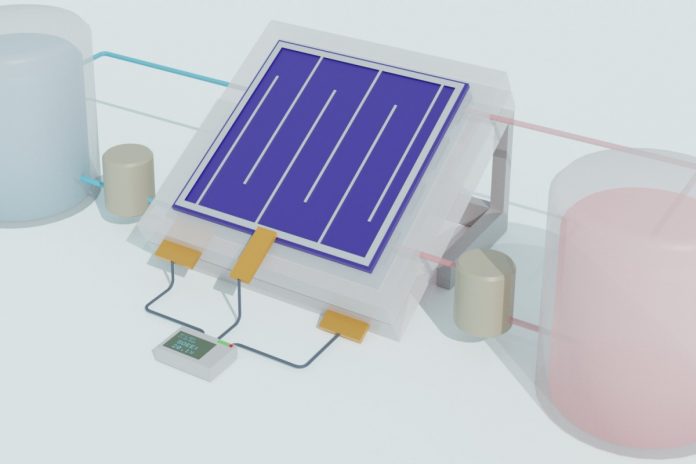A group of worldwide scientists developing a new and more efficient way of harnessing and storing solar power have set a new record for efficiency, using cells designed and fabricated in Australia.
Their research is into the emerging technology of solar-flow batteries.
Solar-flow batteries combine traditional parts of solar energy harvesting and storage into one device, capable of generating and storing renewable energy from the sun.
The team boasts a 40 per cent improvement over what was previously the most efficient solar-flow battery.
In 2018, a solar-flow device recorded more than 14 per cent efficiency.
At the time, the highest performing large scale solar cells rated at around 24 per cent efficiency.
Efficiency refers to how much of the sun’s energy is able to be harnessed and converted into electricity.
The 2018 record was a big improvement over the 1.7 per cent efficiency the researchers managed for a prototype of the same device just two years earlier.
But now the researchers are boasting an efficiency of 20.1 per cent, another two years later.
The tandem perovskite/silicon solar cells designed and fabricated by Professor Anita Ho-Baillie at the University of Sydney Nano Institute and by postdoc researcher Dr Jianghui Zheng at UNSW were paired with specially designed chemical battery components in the new and improved device.
The researchers are also working towards developing devices with longer life cycles as well as increased efficiency.
They said the new design had an “unprecedented continuous operation lifetime”, but that lifetime is still only a little more than 500 hours, or around 20 days.
It’s hoped further improvements in solar-flow devices could bring a “competitive, decentralised” approach to electrifying rural areas.
Because solar-flow batteries are a sort of all-in-one device, they could be easily deployed on a small scale, such as on an individual property in a remote location, or widely distributed in countries with less developed energy infrastructure.
Small scale solar energy has been possible on individual properties for some time, and pairing solar cells with batteries is becoming increasingly popular as the technology to store solar energy improves as well.
There are also investments being made in large scale “solar farms” intended to feed into the national energy grid and power more than just an individual home.
Power generated by the sun, which includes those farms as well as small scale generation like solar panels on your roof, accounted for 46 per cent more of the energy generated in Australia in 2019 than it did the year before.
Renewables in general accounted for around 21 per cent of all energy generation in 2019, but were responsible for 12 per cent more energy generation than they were in 2018.
The researchers from the University of Sydney, UNSW, University of Wisconsin-Madison, Utah State University, King Abdullah University of Science and Technology in Saudi Arabia and the City University of Hong Kong have published their research in the journal of Nature Materials.





























